Who are the Hungarians?
Hungarians are a highly literate group of people from the heart of Europe. They call themselves “Magyar” after the most prominent Hungarian tribes in the decisive invasion of 896.
These horsemen, the Manicha-Er or Megyer, were initially a group of seven tribes from the Urals and the steppes of eastern Asia. They were joined later by three Turkic tribes becoming ten – the Ten Arrows or the“On-ogur.” It is likely that the name “Hungary” evolved from the name of this coalition.
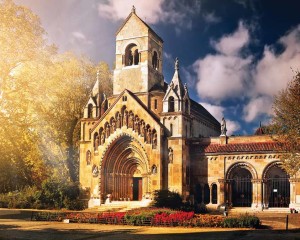 The horsemen deposed the rulers of the area and moved into the lowlands of the Carpathian Basin along two primary rivers the Danube and the Tisza – and their tributaries. There they continued a semi-nomadic lifestyle. Over the next 100 or so years, they settled into the Basin and around 1000 CE, they established a Christian monarchy, the Kingdom of Hungary, under St. Stephen. These people shaped the languages which became Hungary’s native tongue.
The horsemen deposed the rulers of the area and moved into the lowlands of the Carpathian Basin along two primary rivers the Danube and the Tisza – and their tributaries. There they continued a semi-nomadic lifestyle. Over the next 100 or so years, they settled into the Basin and around 1000 CE, they established a Christian monarchy, the Kingdom of Hungary, under St. Stephen. These people shaped the languages which became Hungary’s native tongue.
Part of the Uralic language group, it shares few characteristics with other language. Other group members are confined to Finns and Estonians. Hungarian has no Germanic or Latin origins. Its original and unique alphabet was abandoned in favor of Latin script around the time of St. Stephen.
The Kingdom of Hungary played an important part in the Holy Roman Empire. Its borders were extensive. Its position in the center of the breadbasket of Europe made it a frequent target of invaders. In modern times, forced out of their own country at intervals by war, politics, and poverty and motivated by a compelling desire to achieve, Hungarians have sought out new homes around the world. Where they settle, they bring their culture, their talents, their values, and their drive.
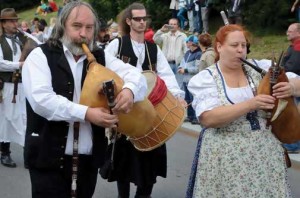
THE HUNGARIAN BAGPIPE BAND “HUNGARIAN BAGPIPE ENSEMBLE” PARADES ON THE 21TH INTERNATIONAL BAGPIPE FESTIVAL PHOTO CREDIT: ALEXANDR JUNEK IMAGING S.R.O..
It is said that although Hungarians look like everyone else, their DNA sometimes gains them the label of the “Martians among us.”
Hungarians love their cuisine. When it comes to eating, Hungarians seem to have no natural bounds. They are omnivorous, adventurous, and hearty eaters with a penchant for the deep redolent flavors of red wines and paprika, garlic, and sour cream. Their desserts make up in nuts and poppy seeds what they lack in sugar. Hungarian emotions run deep and strong – if you are married to one, you know. They talk a lot and all at once. Hungarians have a great love for their music from Liszt to Bartok and Kodaly to Black Friday. Hearty and adventurous, they live life fully.
The Hungarian diaspora started just before World War I. It proceeded in earnest after the Treaty of Trianon in 1921, which dismantled the Kingdom of Hungary. It increased with the displacements of World War II, the Russian invasion, and the ill-fated 1956 Hungarian Revolution. These events drove many Hungarians to the United States. Naples benefited from the arrival of some of these transplants who have made Southwest Florida their home.
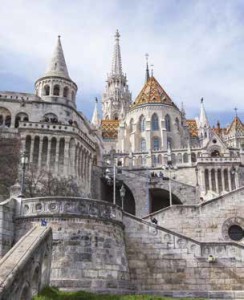 Hungarian families began to arrive in Naples even before the major influx of the late 1940s. The first arrivals were close-knit, meeting in each other’s homes to share ethnic food, their culture, and their language. By the 1960s, the community was large. A common gathering place was the home of Juliana and Andreas Koda where ample food and Christian fellowship were always available. A small Hungarian-American club had organized in Golden Gate but participation dwindled and died out as the original organizers aged. However, the Hungarian community in Naples continued to grow.
Hungarian families began to arrive in Naples even before the major influx of the late 1940s. The first arrivals were close-knit, meeting in each other’s homes to share ethnic food, their culture, and their language. By the 1960s, the community was large. A common gathering place was the home of Juliana and Andreas Koda where ample food and Christian fellowship were always available. A small Hungarian-American club had organized in Golden Gate but participation dwindled and died out as the original organizers aged. However, the Hungarian community in Naples continued to grow.
Prominent among the earliest Hungarian arrivals was Ed Frank, a Naples pioneer and first generation American. Ed was born of Hungarian parents. His father reportedly worked his passage to North America in the boiler room of a ship. The family migrated to California. Their life wasn’t easy. Ed left home to seek opportunity and came across country to Florida arriving in the early 1920s.
Out of money, he decided to settle here. Hard work allowed him to open an early auto repair garage, now replicated in the Naples Depot Museum. Frank is credited with inventing the swamp buggy and starting the swamp buggy races.
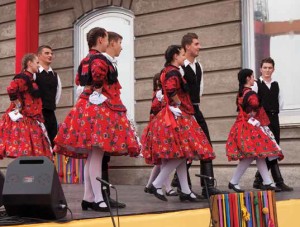
DANCERS IN TRADITIONAL COSTUME PERFORM A FOLK DANCE PROGRAM DURING THE FESTIVAL OF FOLK ARTS. PHOTO CREDIT: ANNTO
According to an anecdotal story from Juliana Koda, Frank and others including Margit and Joseph Toth, also first generation Hungarian – Americans, pooled their ready money ($15) to open a bank. The nearest one was in Ft. Myers and inconvenient for the growing local economy. An elderly and childless Hungarian man offered them an empty 5th Avenue barn to house the bank.
They painted it and put up a sign asking others to join them. Soon they accepted from their first customer a deposit of $5. Other deposits followed and within that year they had over $200 on deposit. The bank they founded – the Bank of Naples – hired experienced bank personnel – R. Clarence and Mamie Tooke- as manager and head cashier. Ed served as Vice-President for many years. The bank thrived.
Ed Frank is well remembered. Goodlette-Frank Road bears his name.
In late 1999, seven Naples residents met at the Fleischmann Community Center. They formally established the present Hungarian-American Club of S.W. Florida paying two years dues in advance to provide seed money to attract members and supporters.
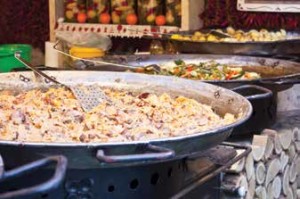 One early supporter was Count Gyula Széchényi, a Port Royal resident and the grandson of the famous Hungarian politician of the same name who served as Minister for the King of Hungary between 1900 and 1903.
One early supporter was Count Gyula Széchényi, a Port Royal resident and the grandson of the famous Hungarian politician of the same name who served as Minister for the King of Hungary between 1900 and 1903.
The group wrote their mission statement – to preserve and promote Hungarian culture through the presentation and enjoyment of Hungarian art, music, dance, literature, history, language, and cuisine – and went to work. By 2001, the organization had grown to 58 paid memberships.
Rev. Stephan Nagy conducted a Hungarian language service in the new chapel of the First Presbyterian Church. It was the very first service held in the new facility.
 The Club began to hold dinners with Hungarian food and music in the Naples Depot on 10th street, the Glen Eagle Country Club and Forest Glen Country Club where the club’s first “Night in Budapest” was held.
The Club began to hold dinners with Hungarian food and music in the Naples Depot on 10th street, the Glen Eagle Country Club and Forest Glen Country Club where the club’s first “Night in Budapest” was held.
By 2002, the Club had expanded its mission and was attracting visitors from around SW Florida to its cultural events. The Erno Kallai Orchestra was brought in from Hungary to perform along with Prima Donna Ibolya Nagy. Count Gyula Széchényi was feted with a dinner.
A commemorative program honored those heroes of the failed 1956 Hungarian Revolt who fell while fighting the Soviet Union for the return of freedom to Hungary. The Hungarian Philharmonic Orchestra visited Naples. A special project was undertaken to help support the building of a water supply system to small ethnic Hungarian villages in Transylvania neglected during Soviet occupation and by the subsequent Romanian government.
In 2005, the club joined forces with Andrew and Phyllis Evva and their American Foundation for Hungarian Youth and Culture to raise funds to build and maintain a monument to the common spirit of freedom that drove the revolutions in America and Hungary. Thanks to the diligent efforts of the Evvas and many club members, the statue, created by the artist Harrison Covington, was finished in 2006.
Originally scheduled to be placed in Freedom Park, it was given a place in the main county government complex to await the completion of the park. It was dedicated on Sunday, December 3rd, of that year in civic ceremony followed by a huge reception at Three Oaks in Estero.
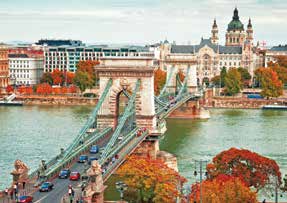 Every October a wreath-laying ceremony is held at the site annually to honor all those who fall in the fight for freedom. In 2010, the Hungarian government awarded the Cross of Merit to five club members – Frank Dobos, Andrew Evva, Phyllis Evva, County Commissioner Donna Fiala, and County Commissioner Frank Halas – for their efforts on behalf of the Hungarian Freedom Fighters Federation.
Every October a wreath-laying ceremony is held at the site annually to honor all those who fall in the fight for freedom. In 2010, the Hungarian government awarded the Cross of Merit to five club members – Frank Dobos, Andrew Evva, Phyllis Evva, County Commissioner Donna Fiala, and County Commissioner Frank Halas – for their efforts on behalf of the Hungarian Freedom Fighters Federation.
Since its inception, the club has grown to over 250 members. These members are generous in support of local charitable drives as well as international efforts in keeping with the club’s purposes, such as relief efforts for flood victims in Hungary and support for the establishment of the Museum of the Hungarian Language in Széphalom, Hungary. The club kicked off 2015 activities with a donation of $2500 to the Freedom Memorial Foundation toward completion of the monument in Freedom Park. Dinner dances at local country clubs continue with emphasis on traditional dishes and entertainment, often brought in from Hungary or Canada. The Rajko Orchestra and the Magyar Kalman are favorites of the crowd.
All people who are interested in Hungarian culture are welcome to become members. Membership includes many local businesspeople, political figures, artisans, and professionals. The club has many 1st, 2nd and 3rd generation Hungarian members and spouses, many of whom no longer speak the “language of the angels” but want to see their heritage preserved. Events are open to the public by reservation.
Since some events are restricted by size, reservations are accepted on a first come, first served basis. Various venues are used throughout the year – dinner-dances at local country clubs, fundraisers for needy causes, religious services and luncheons at local churches, historical presentations at the main library, or picnics at local parks. The club offers at least five or six events each season (October thru April).

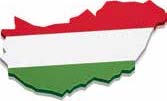
Very interesting article.